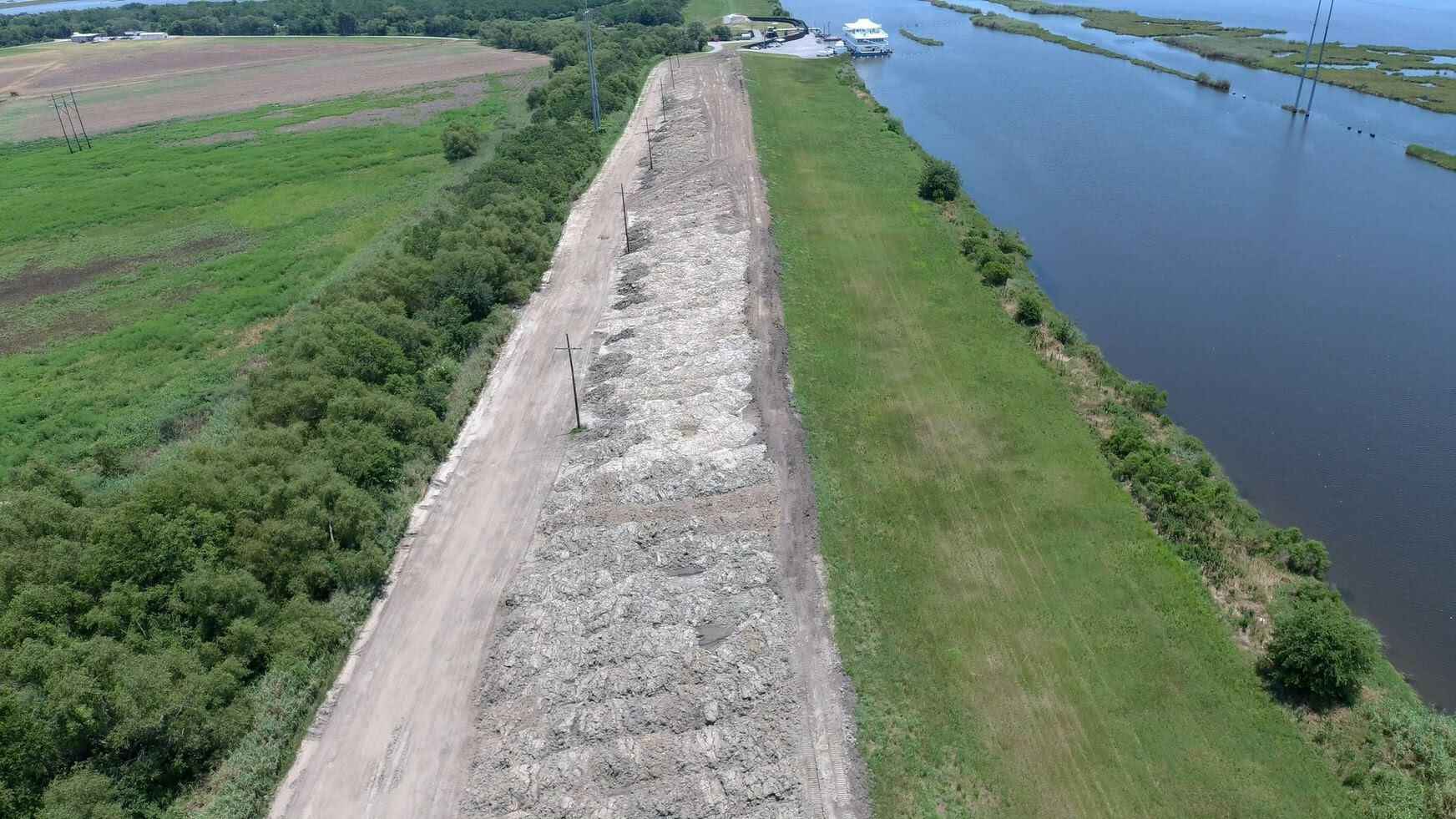
Levees, often referred to as river embankments, are fascinating engineering marvels designed to control and manage the flow of water in rivers. These structures are essential for safeguarding communities against flooding and reducing the risk of damage to surrounding areas. While levees primarily serve a practical purpose, they also offer a rich history and a multitude of intriguing facts.
In this article, we will delve into the world of levees and uncover ten astounding facts that highlight the significance and awe-inspiring nature of these vital river management systems. From their construction techniques to their environmental impact, there is much to learn about these extraordinary structures. So, buckle up and get ready to explore the fascinating world of levees!
Key Takeaways:
- Levees are ancient flood barriers built by civilizations worldwide to protect lands and manage water resources, but they require regular maintenance to prevent failure and ecological impact.
- Combining levees with floodplains can enhance flood protection and cultural significance, showcasing the resilience and adaptability of communities living in flood-prone areas.
Levees are man-made barriers.
Levees are constructed embankments or walls built along rivers or other water bodies to prevent flooding. These structures are typically made from compacted soil, sand, rocks, or concrete.
Levees have been used for thousands of years.
The concept of building levees dates back to ancient civilizations such as the Egyptians and Mesopotamians. They recognized the need to control the flow of water to protect their lands from floods.
Levees can be found globally.
Levees are not limited to specific regions or countries. They are constructed worldwide to safeguard areas prone to flooding, including coastal regions, river valleys, and low-lying areas.
Levees help manage water resources.
In addition to flood protection, levees also play a crucial role in managing water resources. They help regulate the flow of water, maintain river navigation channels, and provide a water supply for irrigation purposes.
Levees require regular maintenance.
Maintaining levees involves monitoring their structural integrity, removing vegetation that can weaken the levee, and repairing any erosion or breaches caused by natural forces or human activities.
Levees can fail.
While levees are designed to withstand the force of water, they can still fail under extreme flood conditions. Overloading, improper construction, or inadequate maintenance can lead to breaches or failures.
Levees can impact ecosystems.
Building levees alters the natural flow of rivers and can disrupt ecosystems. The change in water flow patterns can affect aquatic habitats, fish migration, and sediment transport, which may have long-term ecological consequences.
Levees can be supplemented with floodplains.
Floodplains are low-lying areas adjacent to rivers that temporarily hold excess water during floods. Combining levees with carefully managed floodplains can provide enhanced flood protection and help reduce the impact on downstream communities.
Levees have cultural significance.
In many societies, levees hold cultural importance and symbolize the resilience and adaptability of communities living in flood-prone areas. They often play a role in local traditions, folklore, and celebrations.
Levees are constantly evolving.
Due to changes in climate patterns, land use, and increased urbanization, the design and construction of levees are continuously evolving. Engineers and scientists are working on innovative techniques to enhance levee effectiveness and sustainability.
Conclusion
In conclusion, levees are remarkable structures that play a crucial role in managing and controlling rivers. They provide protection against flooding, maintain water levels, and enhance navigation systems. Additionally, levees create opportunities for agricultural development and support ecosystems by retaining water and trapping sediment.While levees are effective in protecting human settlements and infrastructure, they are not without limitations. Over time, levees can degrade, necessitating constant maintenance and periodic upgrades. Moreover, reliance solely on levees for flood control can have unintended consequences, such as increased vulnerability downstream.Nonetheless, the engineering ingenuity behind levees continues to evolve, with the integration of advanced technologies, sustainable practices, and community-based approaches. By understanding the fascinating facts about levees, we gain a deeper appreciation for their significance in managing river systems and protecting communities.
FAQs
1. What is a river levee?
A river levee is a man-made embankment built along the edges of rivers to control water flow and prevent flooding.
2. How do levees work?
Levees work by confining the river within an embankment, thereby raising the water level and reducing the risk of flooding to surrounding areas.
3. What materials are used to build levees?
Common materials used to construct levees include soil, clay, sand, gravel, and sometimes concrete and steel reinforcements.
4. Are levees always effective in preventing flooding?
Levees can significantly reduce the risk of flooding, but they are not foolproof. Factors like heavy rainfall, rapid snowmelt, or inadequate maintenance can lead to levee failures or overtopping.
5. Do levees have any negative environmental impact?
Levees can alter natural river ecosystems, interrupt the natural flow of water, and prevent the deposition of sediment. This can affect wildlife habitats, water quality, and the overall health of the river system.
6. Can levees be built to withstand all types of floods?
Levees are designed to withstand certain flood levels, known as the design flood. However, extreme events like hurricanes or record-breaking floods may exceed the capacity of levees, leading to potential breaches or failures.
7. Who is responsible for maintaining levees?
The responsibility for maintaining levees varies depending on the location. It can be the government agencies, local municipalities, or levee districts formed by landowners living near the levee.
8. Can levees be relocated or removed?
In some cases, levees have been relocated or removed to restore natural river processes, enhance floodplain connectivity, and improve ecological conditions.
9. Are there any alternative flood control measures to levees?
Yes, there are alternative flood control measures such as floodplain zoning, flood-resistant building designs, and flood forecasting and warning systems.
10. Are all rivers protected by levees?
No, not all rivers have levees. The decision to build levees depends on factors such as flood risk, population density, economic considerations, and available resources.
Levees play a vital role in protecting communities from floods, but they're just one piece of the puzzle. If you're curious about how cities like Clifton, New Jersey, manage their infrastructure, check out our article on transportation and infrastructure facts. Want to learn more about nature's own flood defenses? Our piece on natural levees and their role in flood control is sure to pique your interest. Dive deeper into the world of water management and discover how humans work with nature to keep our cities safe and thriving.
Was this page helpful?
Our commitment to delivering trustworthy and engaging content is at the heart of what we do. Each fact on our site is contributed by real users like you, bringing a wealth of diverse insights and information. To ensure the highest standards of accuracy and reliability, our dedicated editors meticulously review each submission. This process guarantees that the facts we share are not only fascinating but also credible. Trust in our commitment to quality and authenticity as you explore and learn with us.


